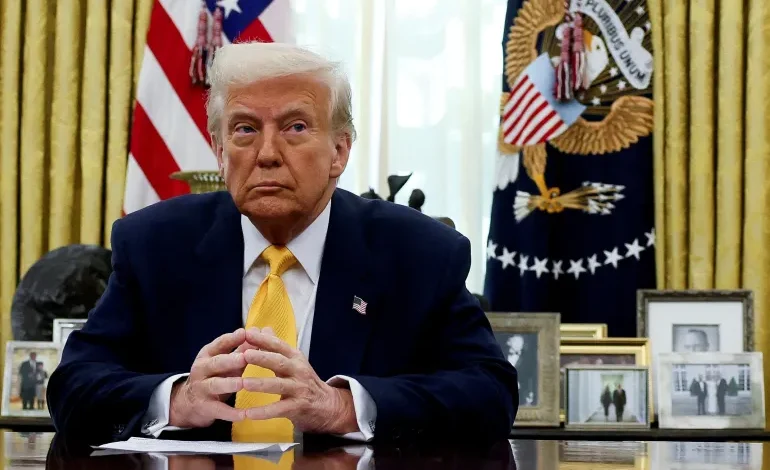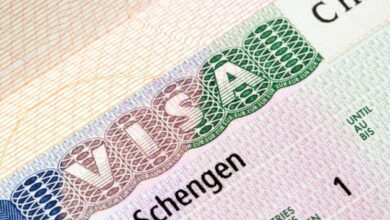Trump bans citizens of 12 countries from US over security risks and visa overstays

U.S. President Donald Trump has announced a travel restriction policy imposing a ban on citizens of 12 countries from entering the United States.
In addition to this, visitors from seven other nations will face heightened entry restrictions.
The new measures are to prevent the sudden airport disruptions witnessed during a similar 2017 ban.
In an official White House statement, Trump laid out the reasons for the new travel ban, pointing to the exploitation of the U.S. visa system by some countries.
“Many of these countries have also taken advantage of the United States in their exploitation of our visa system and their historic failure to accept back their removable nationals.
“As President, I must act to protect the national security and national interest of the United States and its people,” he stated
He also expressed openness to working with countries willing to improve security cooperation.
“I remain committed to engaging with those countries willing to cooperate to improve information-sharing and identity-management procedures, and to address both terrorism-related and public-safety risks,” he said
The proclamation is effective at 12:01 a.m. Eastern Daylight Time on June 9, 2025.
Countries banned and reasons for inclusion in the travel ban
The 12 countries whose citizens are banned outright include:
- Afghanistan: Controlled by the Taliban (a designated terrorist group), Afghanistan lacks a reliable central authority for passports and vetting. It has high visa overstay rates — nearly 10% for tourists and over 29% for students and exchange visitors.
- Burma (Myanmar): Burma shows very high visa overstay rates (27% for tourists, over 42% for students) and has historically not cooperated with the U.S. on accepting back removable nationals.
- Chad: Chad has one of the highest overstay rates, with nearly 50% for tourists and over 55% for students, showing disregard for U.S. immigration laws.
- Republic of the Congo: Overstay rates are also high here — nearly 30% for tourists and 35% for students.
- Equatorial Guinea: Notable for very high student visa overstays at over 70%, and almost 22% for tourists.
- Eritrea: The U.S. questions Eritrea’s passport authority’s competence. It refuses to accept deportees and has high overstay rates (20% tourists, 55% students).
- Haiti: Haiti has high overstay rates (31% tourists, 25% students) and an influx of illegal migrants, raising concerns about crime and national security. It lacks a strong law enforcement system.
- Iran: A known state sponsor of terrorism, Iran fails to cooperate on security and refuses to accept deported nationals.
- Libya: Libya lacks a competent passport authority and has a history of terrorist presence, raising security risks.
- Somalia: Somalia lacks government control and passport systems, is a terrorist safe haven, refuses deportees, and faces ongoing terrorism threats.
- Sudan: Sudan lacks proper passport and vetting systems and has high visa overstay rates (26% tourists, 28% students).
- Yemen: Yemen lacks passport authority, government control, and is currently a U.S. military operation zone.
Countries to face entry restrictions
Beyond the outright travel ban, citizens from seven other countries will encounter heightened visa screening and entry restrictions.
- Burundi
- Cuba
- Laos
- Sierra Leone
- Togo
- Turkmenistan
- Venezuela
Ban remains pending reforms
While acknowledging progress made by some countries, Trump warned that until all address their shortcomings, restrictions will remain in place.
“Some of the countries with inadequacies face significant challenges to reform efforts. Others have made important improvements to their protocols and procedures, and I commend them for these efforts.
But until countries with identified inadequacies address them, members of my Cabinet have recommended certain conditional restrictions and limitations. I have considered and largely accepted those recommendations and imposed the limitations set forth below on the entry into the United States by the classes of foreign nationals identified in sections 2 and 3 of this proclamation,” he said
What you should know
This ban is a revival of Trump’s 2017 travel ban, which barred entry to citizens from seven mostly Muslim countries and faced multiple legal challenges before being upheld by the Supreme Court in 2018.
The current ban expands the list based on updated security reviews and visa overstay data.








